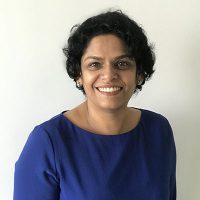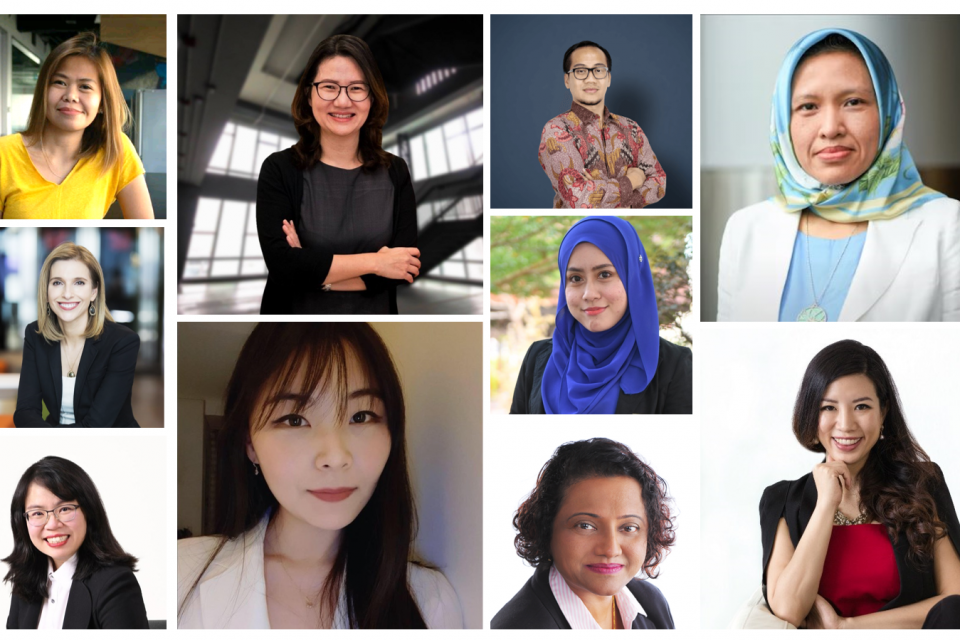 By Annie Mathew, Director, Developer Relations, Microsoft Asia Pacific
By Annie Mathew, Director, Developer Relations, Microsoft Asia Pacific
It was a trip to the mall that first got Dr Hasyiya Karimah Binti Adli interested in artificial intelligence.
She first encountered multi-lingual customer service robots at the Yodabashi Umeda shopping mall in Osaka, which she visited when she was completing her Ph. D in materials science in the Japanese city in 2017.
“So that was the first time I saw the humanoid face robot, and I was fascinated,” she said.
In fact, she was so enthralled by the robot that she sought out a fellow Malaysian at Osaka University who was working in robotics. And when she returned to Malaysia, she further developed her skills and became involved in a number of government and university AI projects. She is now a Microsoft Certified Trainer and a Fellow at the Institute for Artificial Intelligence and Big Data at Universiti Malaysia Kelantan.
Like many coders and engineers, she sought out her chosen career after being inspired by technology itself. But Dr Hasyiya is in a minority. Women account for about 35% of Malaysia’s tech workforce, even though they account for 55% of the workforce overall and are more likely than men to have a tertiary degree.
She’s one of many women who spoke at the launch of Microsoft’s Code; Without Barriers initiative in Asia Pacific that was launched by Microsoft across nine countries, including Singapore, Malaysia, Indonesia, Vietnam, Thailand, Philippines, South Korea, Sri Lanka, and Bangladesh. Code; Without Barriers aims to close the gender gap in the region’s fast-growing cloud, artificial intelligence (AI) and digital technology sectors, in partnership with 13 companies.
‘Let’s transform our mindset’
A World Economic Forum study across several global markets found that only 26% of professionals in data and AI are women and only 12% of cloud computing professionals were women. There is some evidence that Southeast Asia is doing a little better, but it is still well short of parity. And while women make up a sizeable portion of tech graduates, in Southeast Asia, many don’t follow through with plans to work in tech. UN figures show that there is a persistent gap in South Korea as well, and in fact the pay gap there is greater than in neighbouring China and Japan.
The reasons for the gender gap are complex. Many girls show an interest in STEM at a young age, only to see it wane due to psychological and sociocultural barriers, as well as a lack of support to sustain their engagement, according to UN research. Some women are put off by a perceived lack of flexible working arrangements.
Others feel guided into less technical fields. Still, perception is clearly a major issue. Ultimately, many men and women think of engineering and coding as male jobs. Sara Khoo from Siemens Energy in Malaysia says it’s a perception that needs to change.
“I would say male dominance in the technical workforce has shaped our assumptions on achieving success. And to transform this belief, we proactively challenge for there to be more success. We need females to join the work force. Let’s transform our mindset,” she said.
Good for diversity and for business
This latest push to bring more women into the workforce comes as a talent crunch looms for Southeast Asia’s tech industry. Over the next five years, Microsoft estimates that the global workforce can absorb around 149 million new technology-oriented jobs. Most of them are in software development, but roles in data analysis, cyber security, and privacy protection will also grow.
Tech businesses could suffer if they don’t expand the pool of available talent in the face of this talent crunch. And businesses that don’t cultivate diversity could face a 2-3% rise in costs due to increased turnover as employees seek better culture and conditions elsewhere. Greater female participation is one solution, and Code; Without Barriers can help. It’s really bringing talent on one side and organizations and governments that require this talent together through this platform, Code; Without Barriers.
The managing director of DEVCON Philippines Shumate Royo said that employing more women isn’t just a quantitative solution but a qualitative one too. DevCon is one of the country’s biggest tech developer organizations, and it helped with the creation of technological solutions to help with managing the pandemic.
“Having a female developer gives a different perspective as well, so if you have different perspective within your company and within your organization, imagine the creativity, and imagine the different kinds of ideas that will come out of it,” she said.
Leanne Robers is the co-founder of She Loves Tech, which is a global platform that is committed to closing the funding gap for women entrepreneurs. She argued that businesses ignore women at their own peril.
“Women make up 70-80% of consumer decisions. The population is made up at least of 50% women. So how can you be building services and products if you don’t have enough female developers at the core of it,” she said.
‘Applaud for her’
Even with mounting evidence that a more diverse team leads to better outcomes, the gender gap remains stubbornly large. Code; Without Barriers hopes to address it through partnerships with more than 21 developer communities across APAC, reaching more than 407,000 developers across data, AI, DevOps, Java, JavaScript and Python and Women in Tech.
But convincing more women to get into the field will also take allyship: A willingness for people to use their positions to support and empower women in the workplace. Sometimes, it’s simply a matter of encouragement. Olivia Ha says her organization Women Who Code Seoul includes open-mic event called ‘Applaud For Her’ in every event, which allows anyone to get up and talk about their own successes.
“This can seem like a small thing, but I think this tradition really helps us nurture and support each other, and encourages women to speak out,” she said.
Allies don’t have to be women. Narenda Wicaksono said his own organization, Dicoding, was exclusively male when he started it around seven years ago. He says Dicoding has worked hard to become a more inclusive workplace.
“Now we have thirty percent female at the company, and I’m really proud of that,” he said, adding “It’s really triggering innovation in our company”.
‘The opportunity to choose’
Even if there are challenges to working in a field that has traditionally been dominated by men, all speakers agreed that it was a rewarding career which they would recommend to younger women. Datin Habsah has worked at Petronas for 25 years. Her meetings at Malaysia’s national petroleum company are sometimes dominated by men. But she thinks technology is too important to ignore and is only becoming a more interesting career choice.
“I think the diversity and complexity and richness of the skill sets is growing. And being in a tech world, you’ll just be in one of many, many skill sets, so you have the opportunity to choose,” she said.
Associate Professor Tiranee Achalakul taught at university for 18 years before she worked at Thailand’s Government Big Data Institute. Several of her former students now work in the US for major tech firms, including Microsoft. She said there’s no reason younger women can’t seek out a career in tech, but it helps if they can get some hands-on experience.
“Telling them that you’re good enough to do it is not enough. I actually want them to be able to experience tech development” she said.
Above all, encouraging women to take on tech careers will require cultural change.
In 2019, She Loves Tech ran an event in Pakistan, where mobile ownership among women languishes at about 50%. Still, many girls in the audience might seek out a career in tech with the right encouragement.
“I had young girls coming up to me after the event and thanking me for bringing She Loves Tech to Pakistan and they said because they saw women on stage building ground-breaking technology, they now know that they can also select a career in technology,” said Leanne Robers.
To learn more about Code; Without Barriers, visit: https://aka.ms/AboutCWB and to join the community: http://aka.ms/CodeWithoutBarriers





